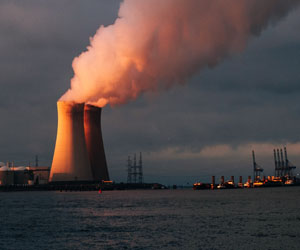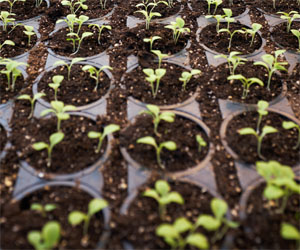


Understanding And Mitigating Our Footprint

The term "environmental impact" refers to the effect human activities have on the natural world, encompassing a wide range of consequences, both positive and negative. In recent decades, concerns about environmental impact have become increasingly prominent due to growing awareness of climate change, habitat destruction, pollution, and resource depletion. Understanding the multifaceted dimensions of environmental impact is crucial to address and mitigate the challenges it presents.
1. Climate Change: One of the most significant environmental impacts associated with human activities is climate change. The burning of fossil fuels, deforestation, and industrial processes release greenhouse gases such as carbon dioxide into the atmosphere. These gases trap heat, leading to global warming and unpredictable climate patterns. The consequences include more frequent and severe weather events, rising sea levels, and disruptions to ecosystems.
2. Habitat Destruction: Human activities, including urbanization, agriculture, and industrial development, have led to the destruction of natural habitats. This results in the loss of biodiversity, as many plant and animal species face extinction due to habitat loss and fragmentation. Preserving natural habitats is essential to maintaining the Earth's rich biodiversity.
3. Pollution: Pollution takes various forms, including air pollution, water pollution, and soil contamination. Pollutants emitted from industrial, agricultural, and residential sources can harm both the environment and human health. Air pollution leads to respiratory problems, while water pollution impacts aquatic ecosystems and can contaminate drinking water sources.
4. Resource Depletion: The overexploitation of natural resources, such as freshwater, minerals, and forests, depletes these finite resources at an unsustainable rate. This not only threatens the availability of essential resources but also contributes to habitat destruction and environmental degradation.
5. Plastic Pollution: The excessive use and improper disposal of plastic products have resulted in a global crisis of plastic pollution. Plastics take hundreds of years to decompose, and their accumulation in oceans, waterways, and ecosystems poses significant risks to wildlife and ecosystems.
6. Deforestation: Deforestation, primarily driven by agriculture and logging, has far-reaching consequences. It contributes to habitat loss, reduces carbon sequestration, and disrupts global climate patterns. It also affects indigenous communities that rely on forests for their livelihoods.
7. Overfishing: Overfishing and unsustainable fishing practices threaten marine ecosystems and the livelihoods of communities that depend on fisheries. It depletes fish populations and disrupts the balance of marine ecosystems.
Mitigating Environmental Impact:
Addressing environmental impact is a shared responsibility that requires individual, community, corporate, and governmental actions. Several key strategies can mitigate and reduce our environmental impact:
Renewable Energy: Transitioning from fossil fuels to renewable energy sources, such as solar and wind power, reduces greenhouse gas emissions and dependence on finite resources.
Sustainable Agriculture: Adopting sustainable farming practices, such as crop rotation and organic farming, reduces the environmental impact of agriculture.
Conservation Efforts: Protecting natural habitats and preserving biodiversity through conservation programs and protected areas is essential.
Efficient Resource Use: Reducing resource consumption and waste through efficient technologies, recycling, and responsible consumption practices.
Environmental Regulations: Governments and international organizations play a vital role in setting and enforcing environmental regulations and policies.
Education And Awareness: Raising awareness and educating individuals about the environmental impact of their choices empowers them to make more sustainable decisions.
Innovation: Supporting research and innovation in areas such as clean technology, waste reduction, and sustainable agriculture.
Understanding and mitigating environmental impact are essential for a sustainable future. By taking steps to reduce greenhouse gas emissions, protect natural habitats, and promote sustainable practices, we can work toward a more harmonious relationship between human activities and the natural world. Recognizing our role in environmental impact is the first step toward a more sustainable and balanced coexistence with the planet.
A Small Step Toward A Sustainable Future
 Sustainable Ingredients: Planet-conscious cleaning products use sustainable, biodegradable ingredients that break down naturally without harming ecosystems. This reduces the impact on waterways, marine life, and overall environmental health.
Sustainable Ingredients: Planet-conscious cleaning products use sustainable, biodegradable ingredients that break down naturally without harming ecosystems. This reduces the impact on waterways, marine life, and overall environmental health.
Conservation Of Resources: By choosing eco-friendly cleaning practices, we can reduce water and energy consumption. This is crucial for conserving precious resources and reducing our carbon footprint.
Effective Planet-Conscious Cleaning Practices
Eco-Friendly Cleaning Products: Seek out cleaning products that have earned eco-friendly certifications, like the "EcoLogo" or "Green Seal." These certifications ensure that the products meet rigorous environmental and health standards.
Homemade Cleaning Solutions: Making your own cleaning solutions from ingredients like vinegar, baking soda, lemon juice, and essential oils is an excellent way to embrace planet-conscious cleaning. These natural components are effective for various cleaning tasks and are safe for your health and the environment.
Reusable Cleaning Tools: Invest in high-quality reusable cleaning tools such as microfiber cloths, mop heads, and scrubbing brushes. These tools efficiently capture dirt and dust, reducing the need for disposable cleaning supplies and cutting down on waste.
Balancing Prosperity And The Planet
 One of the key principles of sustainable development is the recognition that our planet's resources are finite. As we continue to grow in population and economic activity, it becomes imperative to manage our resources more responsibly. This involves reducing resource consumption, minimizing waste, and promoting energy efficiency. Sustainable development encourages innovation and the adoption of cleaner, greener technologies to mitigate our impact on the environment.
One of the key principles of sustainable development is the recognition that our planet's resources are finite. As we continue to grow in population and economic activity, it becomes imperative to manage our resources more responsibly. This involves reducing resource consumption, minimizing waste, and promoting energy efficiency. Sustainable development encourages innovation and the adoption of cleaner, greener technologies to mitigate our impact on the environment.
Environmental sustainability is a central pillar of sustainable development. It advocates for the conservation of ecosystems, the protection of biodiversity, and the reduction of pollution and emissions. It promotes responsible land and resource management, focusing on sustainable agriculture, forestry, and fisheries.






The Key To Vitality
 The Significance Of Nutrient Absorption
The Significance Of Nutrient Absorption
Nutrient absorption is the bridge between the food we eat and the nutrients our bodies need to function optimally. It is crucial for maintaining health, supporting growth, and providing energy for daily activities. Without effective nutrient absorption, the body would struggle to obtain the vital elements required for various bodily functions.
The Digestive System's Role
The process of nutrient absorption begins in the digestive system, where food is broken down into smaller molecules through mechanical and chemical digestion. The small intestine, in particular, plays a central role in nutrient absorption. Its walls are lined with tiny finger-like projections called villi, which are covered in even smaller hair-like structures known as microvilli. These structures increase the surface area available for nutrient absorption.
Types Of Nutrients Absorbed
Several types of nutrients are absorbed during digestion, including:
Carbohydrates: Simple sugars like glucose are absorbed directly into the bloodstream.
A Glimpse Into Tomorrow's Living Spaces
 A Symphony Of Automation And Connectivity
A Symphony Of Automation And Connectivity
The home of the future is a symphony of automation and connectivity. It's a place where technology seamlessly integrates into every aspect of daily life. From the moment you wake up, your home is ready to assist you. Imagine a home where the lights gradually brighten to mimic the natural sunrise, and your coffee maker starts brewing your morning cup as your alarm goes off. This level of automation is now possible thanks to smart home technologies.
Smart Home Upgrades
One of the key elements of the home of the future is the plethora of smart home upgrades available today. These upgrades have revolutionized the way we interact with our living spaces. From intelligent thermostats that adapt to our preferences to security systems that keep a vigilant eye on our property, these technologies hold the potential to elevate our homes into spaces of the future.
Personalized Living
The home of the future is all about personalization. With smart technologies, your home can learn your habits and adapt to your preferences. For example, smart thermostats can create a tailored heating and cooling schedule based on your daily routines.
Cultivating Your Green Thumb
 Start Small: For beginners, it's often best to start with a small garden area. This can be a corner of your backyard, a few pots on your balcony, or even a sunny windowsill. Beginning with a small space allows you to learn the basics without feeling overwhelmed.
Start Small: For beginners, it's often best to start with a small garden area. This can be a corner of your backyard, a few pots on your balcony, or even a sunny windowsill. Beginning with a small space allows you to learn the basics without feeling overwhelmed.
Choose The Right Location: select a location that receives adequate sunlight for the plants you want to grow. Most vegetables and flowers require at least 6 hours of direct sunlight per day. If you have limited sun exposure, consider shade-tolerant plants like hostas or ferns.
Select Easy-To-Grow Plants: As a beginner, it's wise to start with plants that are known for their resilience and forgiving nature. Some easy-to-grow choices include tomatoes, basil, marigolds, and zinnias. These plants are relatively low-maintenance and can be quite forgiving of minor mistakes.
Quality Soil Is Key: Healthy soil is the foundation of a successful garden. Invest in good-quality potting mix or amend your garden soil with organic matter like compost to improve its fertility and structure.
Learn About Watering: Overwatering and underwatering are common mistakes for beginners. Research the specific watering needs of your plants. Most plants prefer even, consistent moisture, but some drought-tolerant varieties may require less frequent watering.
Gardening Tools: Acquire a few essential gardening tools, including a trowel, hand pruners, a watering can or hose, and gardening gloves. These tools will make your gardening tasks much easier.
Garden Maintenance: Regular garden maintenance includes weeding, deadheading (removing spent flowers), and pruning. These tasks help keep your garden looking tidy and encourage healthy growth.
Protecting Our Planet Through Sustainable Practices
 Environmental benefits are critical for several reasons:
Environmental benefits are critical for several reasons:
Ecosystem Health: By reducing pollution, habitat destruction, and resource depletion, environmental benefits help maintain the health and diversity of ecosystems.
Climate Change Mitigation: Sustainable practices that reduce greenhouse gas emissions and promote carbon sequestration are essential for combating climate change.
Resource Conservation: Environmental benefits help protect and conserve vital resources like water, soil, and biodiversity.
Human Health: A cleaner environment means better air and water quality, which directly affects human health.
Strategies For Achieving Environmental Benefits
Numerous strategies and practices contribute to environmental benefits:
Renewable Energy: Transitioning to renewable energy sources like solar, wind, and hydropower reduces greenhouse gas emissions and lessens the environmental impact of energy production.
Waste Reduction: Reducing, reusing, and recycling materials minimizes waste and lowers the environmental footprint of resource extraction and disposal.
Sustainable Agriculture: Practices like organic farming, crop rotation, and agroforestry help maintain soil health, reduce chemical use, and preserve biodiversity.
Green Building Design: Energy-efficient and sustainable building designs can lower energy consumption and minimize the use of natural resources.
Conservation And Restoration: Protecting and restoring natural habitats can preserve biodiversity, improve water quality, and sequester carbon.
Nurturing Our Lifeline
 Human Survival: Water is essential for drinking, cooking, and sanitation. Access to clean and safe water is a fundamental human right, yet it remains out of reach for millions around the world.
Human Survival: Water is essential for drinking, cooking, and sanitation. Access to clean and safe water is a fundamental human right, yet it remains out of reach for millions around the world.
Agriculture: Agriculture is the largest consumer of water globally. Crops and livestock rely on water for growth and sustenance, making it indispensable for food production.
Ecosystems: Aquatic ecosystems, from rivers and lakes to oceans, support biodiversity and help maintain the balance of nature. These ecosystems provide essential services such as water purification and flood regulation.
Industrial Processes: Industries depend on water for manufacturing and energy production. Water resources play a pivotal role in supporting economic activities and industrial growth.
Challenges Facing Water Resources
Despite the undeniable importance of water resources, they face several challenges:
Water Scarcity: Many regions worldwide are grappling with water scarcity, where the demand for water surpasses the available supply. This issue is exacerbated by population growth, urbanization, and climate change.
Water Pollution: Pollution from agricultural runoff, industrial discharges, and inadequate sanitation contaminates water sources, making them unsafe for consumption and detrimental to ecosystems.
Inefficient Water Use: Wasteful water practices in agriculture, industry, and households contribute to water stress and resource depletion.
Deteriorating Ecosystems: The degradation of aquatic ecosystems harms biodiversity and impairs the ability of natural environments to purify water and regulate local climates.